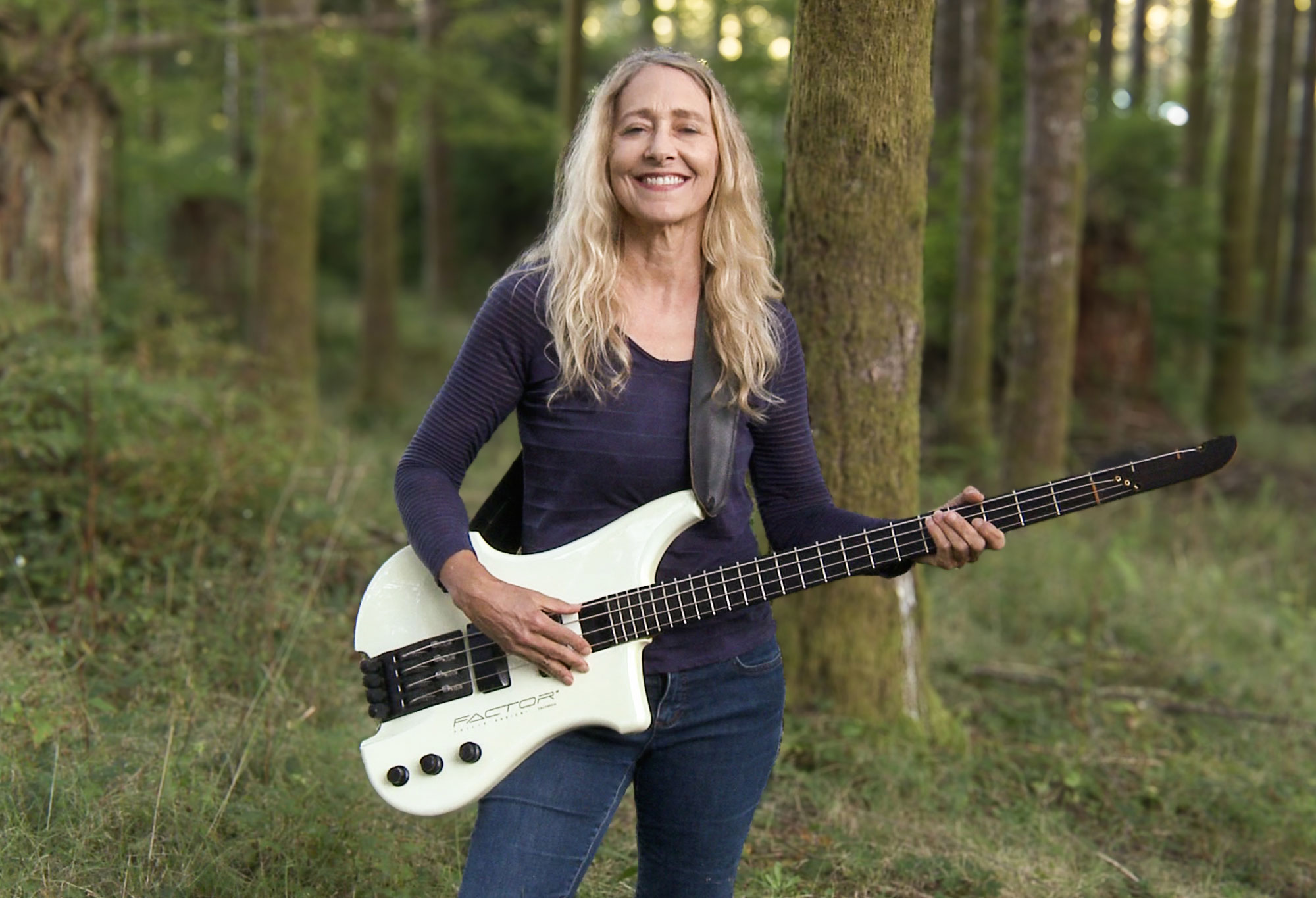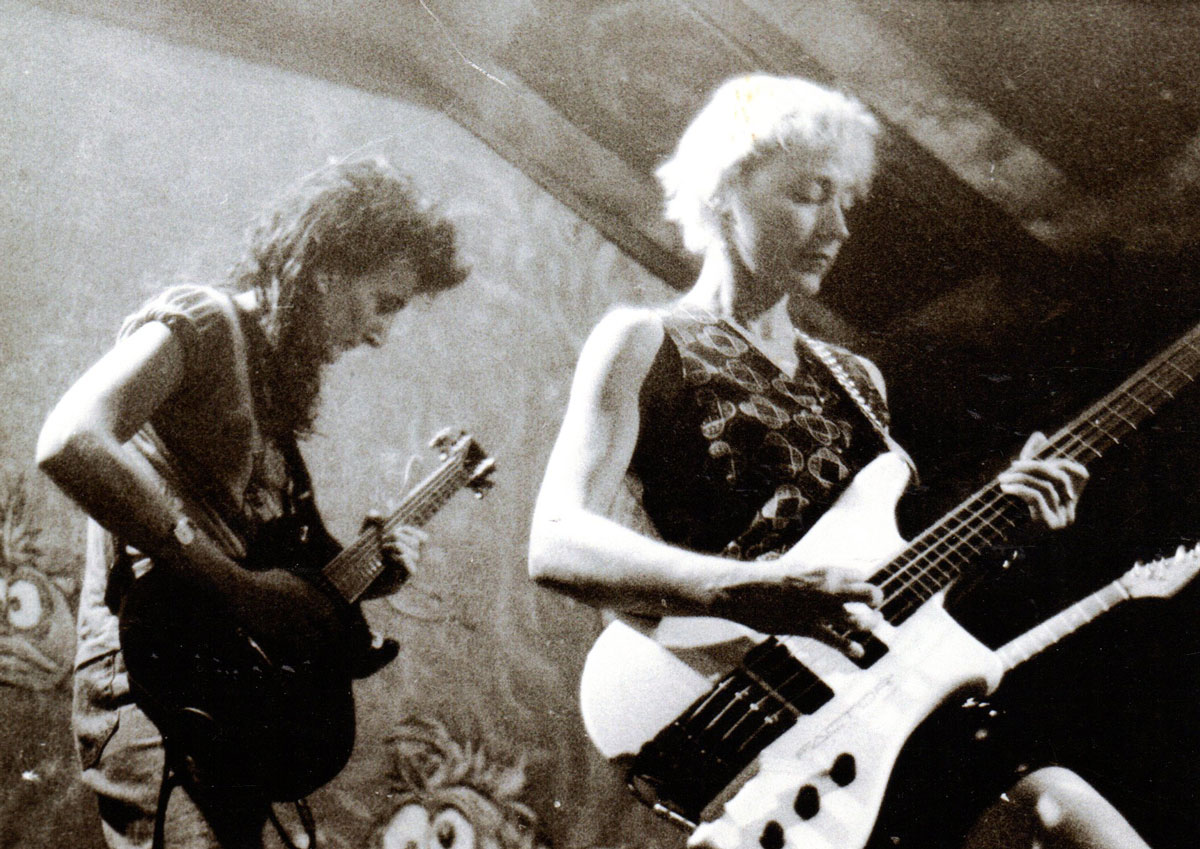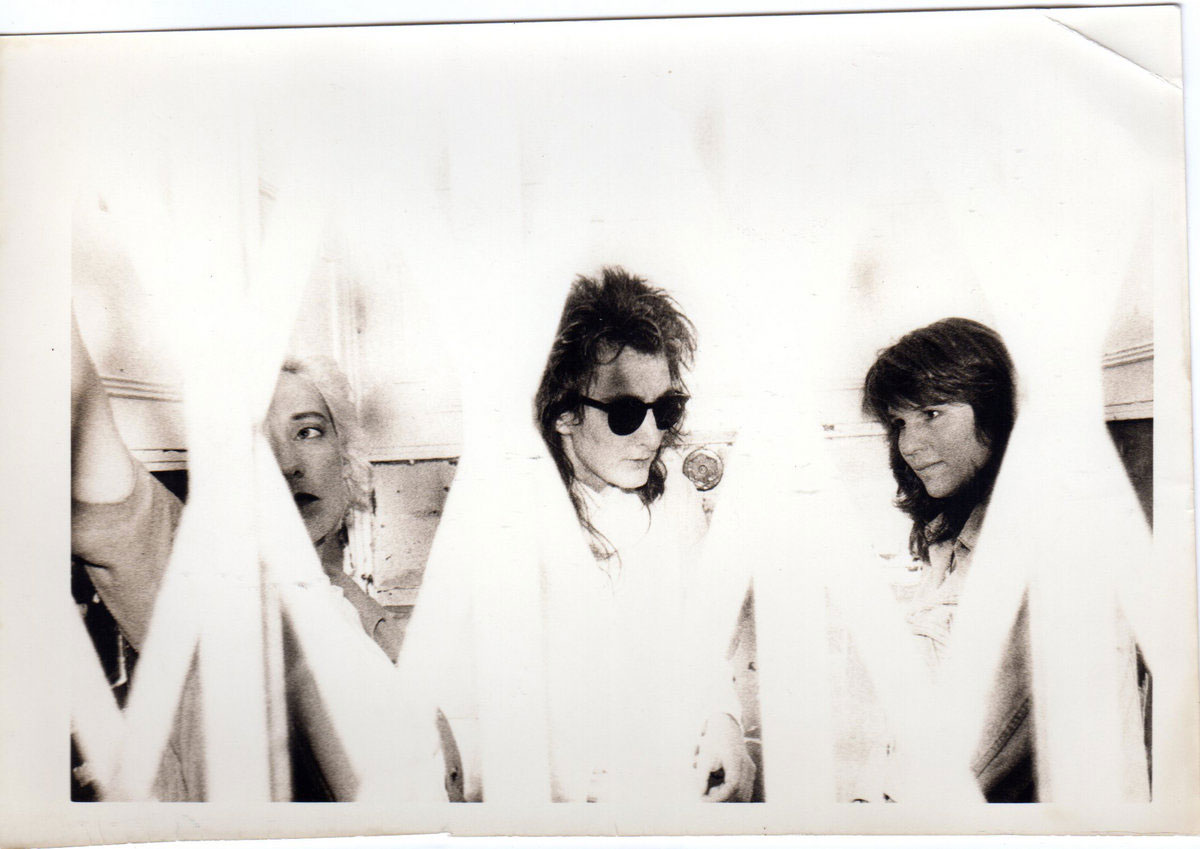When hick was chic When hick was chic When hick was chic
Post-punk trailblazer Char Easter makes a dreamy comeback.
By Shin Yu Pai | Photos courtesy of Char Easter | September 8, 2025

Char Easter, ’96, ’11, didn’t plan to return to music, but then a few years ago she stepped into a rehearsal space for a jam session and was swept back in by “an atmospheric wall of sound.”
That session with a few other Seattle music veterans would become Luna Moss, a dream-pop band rooted in the Pacific Northwest’s ethereal beauty. Their debut album “Dosti,” released in August, marks Easter’s return to a music scene she helped shape decades ago, when “hick was chic,” Easter says, and before grunge even had a name.
Back in the late 1980s and early ’90s, Easter was the front-woman of Common Language, an all-female post-punk band known for brooding vocals and ethereal sound. While Nirvana was rising from Aberdeen to MTV, Common Language was earning praise in publications like the Seattle Weekly, The Rocket, Backlash and even The Washington Post, which described their sound as music that presented “a sea of possibilities.”

Common Language, an alternative band with an atmospheric sound, was founded by Char Easter (right), Mary Lake Palmer (left) and Gretchen Wenner.
They were part of a broader underground that grunge—with its hiking boots and torn jeans—eventually eclipsed, Easter says. But “there was so much more to it.”
Easter’s roots trace back to Aberdeen, the same isolated logging town that produced Kurt Cobain. Her childhood had periods of rural isolation: her father, Dick Easter, ’58, a former Boeing engineer, moved the family to Amboy to build The Lake Merwin Campers Hideaway on 588 acres.
“Our camping moments were not recreational,” Easter says. “It was a lifestyle: The ruts of muddy roads, the lack of electricity.” The experience was backwoods even by rural standards. She spent one high school summer riding her horse through the forest, portable radio in hand linking her to a music world she would later help shape.
After a brief stint in Europe and time studying music at Mt. Hood Community College, Easter landed in Seattle “on a whim and a coin toss.” It was the late 1980s, and the city’s alternative music scene was buzzing. She formed 5 Sides Collide with then-partner Nick Currie, then moved on to form Common Language in 1988 with Mary Lake and Gretchen Wenner.

Char Easter (left), Mary Lake (center) and Gretchen Wenner (right). In July 2021, after Lake’s death, Common Language shared a compilation of unreleased material recorded between 1989–1995.
They released a 12-inch EP, “Urge to Forget,” in 1989 on Sun & Steel, and followed it with “Scar,” released by Big Flaming Ego. The band caught the attention of UK label Blast First (home to Sonic Youth) who signed them in 1994.
But success was complicated. The musicians wanted to tour and evolve; the label didn’t support that growth. By 1995, Common Language had run its course and Easter stepped away, soon to pursue a literature degree at the University of Washington. What followed was a decades-long career behind the scenes. She worked as a copywriter, interactive media producer and scriptwriter for employers including Microsoft. She produced a yoga video, plus a CD called “The Art of Pranayama” for beloved Iyengar yoga teacher Felicity Green.
One of her favorite assignments was with Paul Allen’s Experience Music Project (now MoPOP). She helped design exhibits and digital experiences for the museum’s grand opening in 2000. “It was a dream job,” she says, “with what seemed like an unlimited budget and access to luminaries like Ann Wilson of Heart, who did a voice-over for the acoustic guitar kiosk.”
Easter later studied screenwriting at TheFilmSchool with teachers including writers Stewart Stern and Warren Etheredge, director John Jacobsen and actor Tom Skerritt. She moved to her family’s tree farm to work on a screenplay. When Easter returned to her producer role, the work no longer felt creative or challenging. “I had to reinvent myself,” Easter says. “I went back to UW to study human-centered design.”
“Standing in the space with that atmospheric wall of sound, I fell in love with music again.”
Char Easter
Equipped with a new set of skills, Easter went to work for The Seattle Times, where, among other projects, she worked with people with visual impairment to test the usability of the newspaper’s website. Her efforts resulted in an accessibility checklist that was adopted across the editorial teams.
A couple of years before the pandemic, guitarist Dan Blossom invited Easter to jam with his band, which included drummer Rolf Berteig and bassist Scott Boggan, ’10. They had played in different bands—including Feast and Room Nine—during Seattle’s underground heyday but had never collaborated. Easter wasn’t looking for a new project, she says, “but standing in the space with that atmospheric wall of sound, I fell in love with music again.”
The pandemic scattered the group, but Easter kept writing. The band eventually reassembled with Easter, Berteig and Blossom expanding and arranging Easter’s “two-minute max” songs into full tracks for Luna Moss’s new album “Dosti.” “Empty” is a sensual dream-pop single with shadowy textures for which Easter’s sister Cheryle shot the music video. She captured the haunting beauty of the Pacific Northwest in the night mists surrounding Guemes Island and the Ape Caves of the Gifford Pinchot National Forest.
Now retired from tech, Easter has re-devoted herself to music. Luna Moss is a natural evolution, with the same curiosity and edge that fueled her early work, but grounded in experience. In finding her way back to music, Easter is not chasing the past, she’s finally catching up to herself.
You can listen to Luna Moss’s debut album “Dosti” on Spotify, Bandcamp or wherever you stream music.